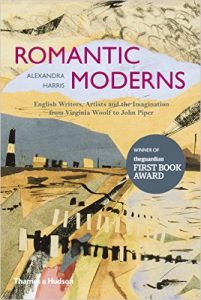Literary Peregrinations: Geographers as Explorers
While I was reading Andrea Wulf’s “The Invention of Nature. Alexander von Humboldt’s New World”. I noted a comment on the back cover by Richard Holmes. Holmes was Professor of Biographical Studies at the University of East Anglia. Through the services of Inter-library loan, I was able to track down a number of biographies by Holmes. Of particular relevance here, was ‘The Age of Wonder: How the Romantic Generation discovered the Beauty and Terror of Science’.
Reviews include the following comment by Oliver Sacks.

“He (Holmes) becomes the biographer, not of a single figure, but an entire period, when artist and scientist could share common aims and ambitions and a common language – and together create a ‘romantic’ humanist science. We are once again on the brink of such an age, when science and art will come together in new and powerful ways.’
The book includes inter-twined mini-biographies of Joseph Banks, William Hershel, Mungo Park and Humphrey Davy and covers the period 1769-1840.
What immediately caught my attention was Chapter 1: Joseph Banks in Paradise. Banks was the official botanist onboard the Endeavour, under the command of James Cook. Banks was twenty-six years old. He later became President, The Royal Society in London.
What interested me, besides the reference to Paradise (in this case Tahiti, and not rural Nova Scotia) was the youthfulness of these early explorers. And, following on from Sack’s comment about the relationship between science and the arts. What is the status between science and the arts today ? And where does Geography (aka. the Exploration of the Earth) play a part ?
My next step was the book by Alexandra Harris ‘Romantic Moderns. English Writers, Artists and the Imagination from Virginia Woolf to John Piper”. ‘Romantic Modern investigates one of the richest periods in the arts of the country, and it traces the extraordinary network of personal and cultural encounters from which a modern English renaissance grew’.p.10.
 The time frame is 1930’s to 1940’s. Harris says:
The time frame is 1930’s to 1940’s. Harris says:
‘Above all, this book is about art and place. Its protagonists are always out looking at England, and they invite us to follow in their tracks’. p.14.
‘Many of today’s literary geographers have contributed to ‘Memory Maps’ http://www.vam.ac.uk, an evolving project devised by Marina Warner in collaboration with the University of Essex and the Victoria and Albert Museum’. p.293
As Warner says ‘ there is a political purpose here, in a project which promotes active public engagement with issues of identity, ecology and stewardship’.
It is necessary to search for Marina Warner on the Victoria and Albert Museum site.
My third step comes from Brain Pickings http://www.brainpickings.org, is a remarkable web site maintained and published by Maria Popova . In the current weekly e-newsletter, she references the work of Rebecca Solnit and her new New York atlas. Check it out.
References:
Richard Holmes. 2008. The Age of Wonder. How the Romantic Generation discovered the Beauty and terror of Science. Harper Press.
Alexandra Harris. 2010. Romantic Moderns. English Writers, Artists and the Imagination from Virginia Woolf to John Piper. Thames and Hudson.
Rebecca Solnit and Joshua Jelly-Schapiro 2016.Nonstop Metropolis; A New York City Atlas
Rebecca Solnit. 2010. Infinite City:A San Francisco Atlas
Rebecca Solnit and Rebecca Snedeker. 2013. Unfathomable City: A New Orleans Atlas
Brain Pickings.www.brainpickings.org
Memory Maps. www.vam.ac.uk
Holmes has also written two studies of European Biography.
Footsteps: Adventures of a Romantic Biographer. 1985
Sidetracks: Explorations of a Romantic Biographer. 2000.









Remarkable ! I just noticed that RCGS announced a new Centre for Geography and Exploration in Ottawa. Very prescient.